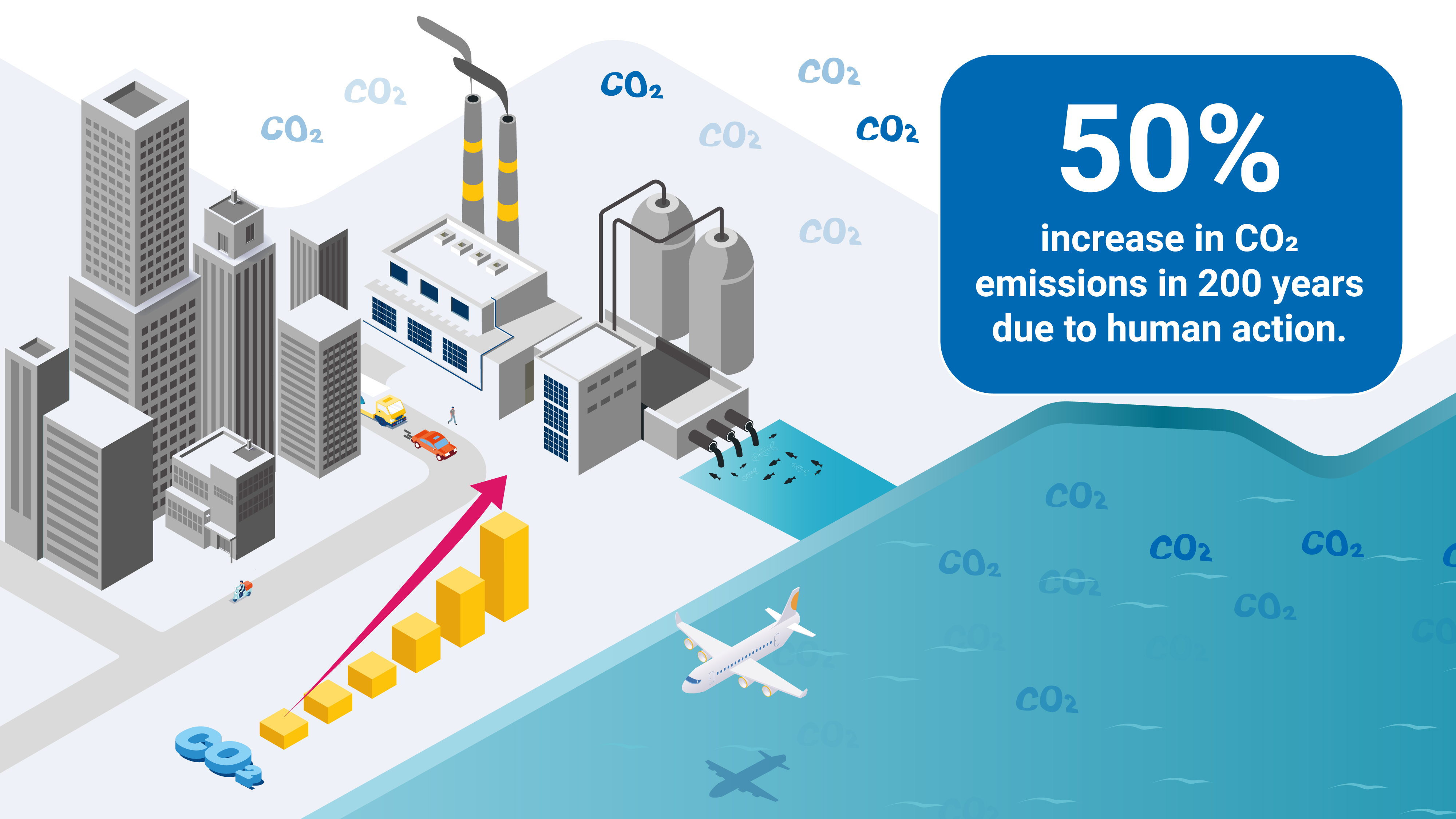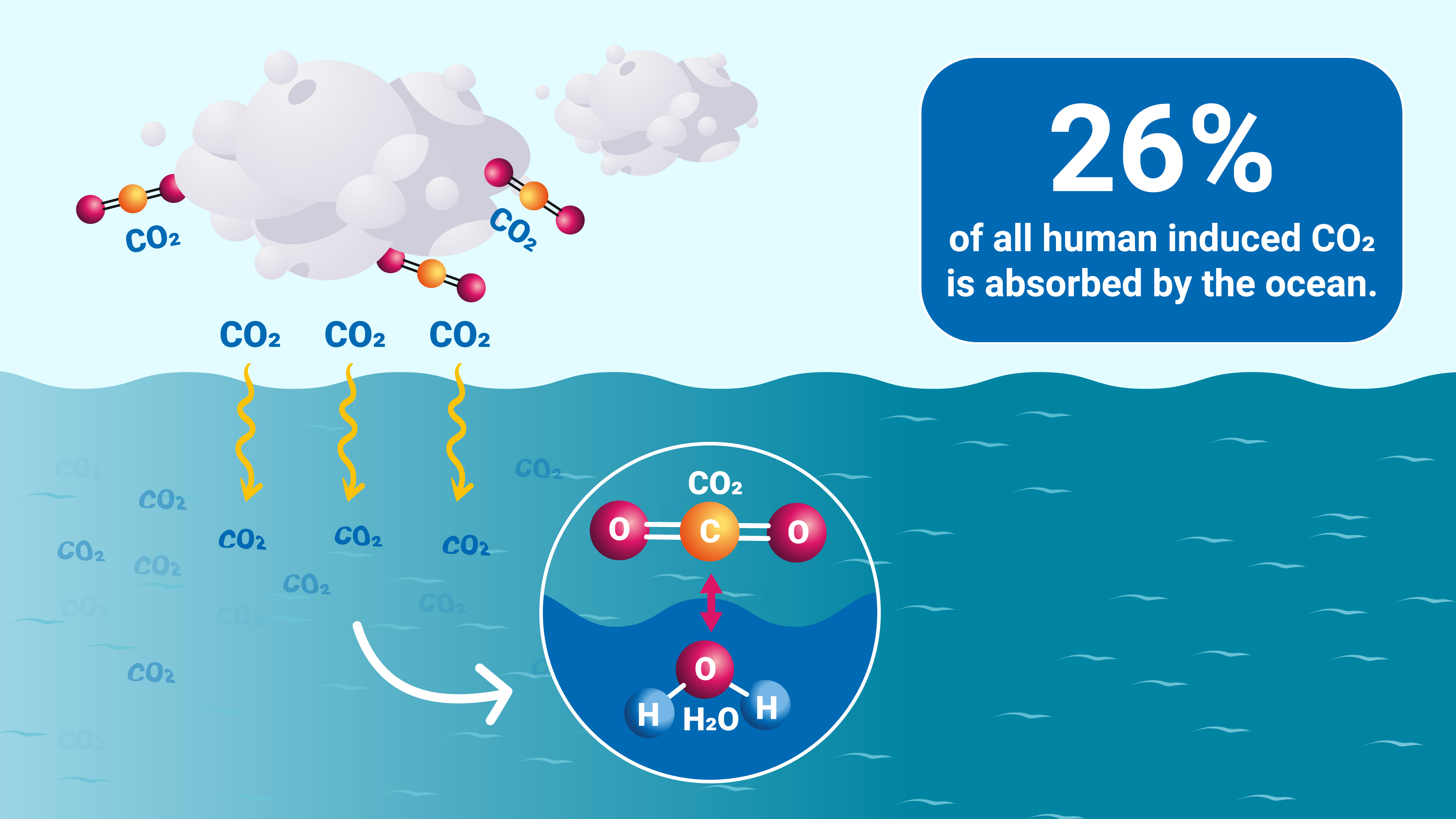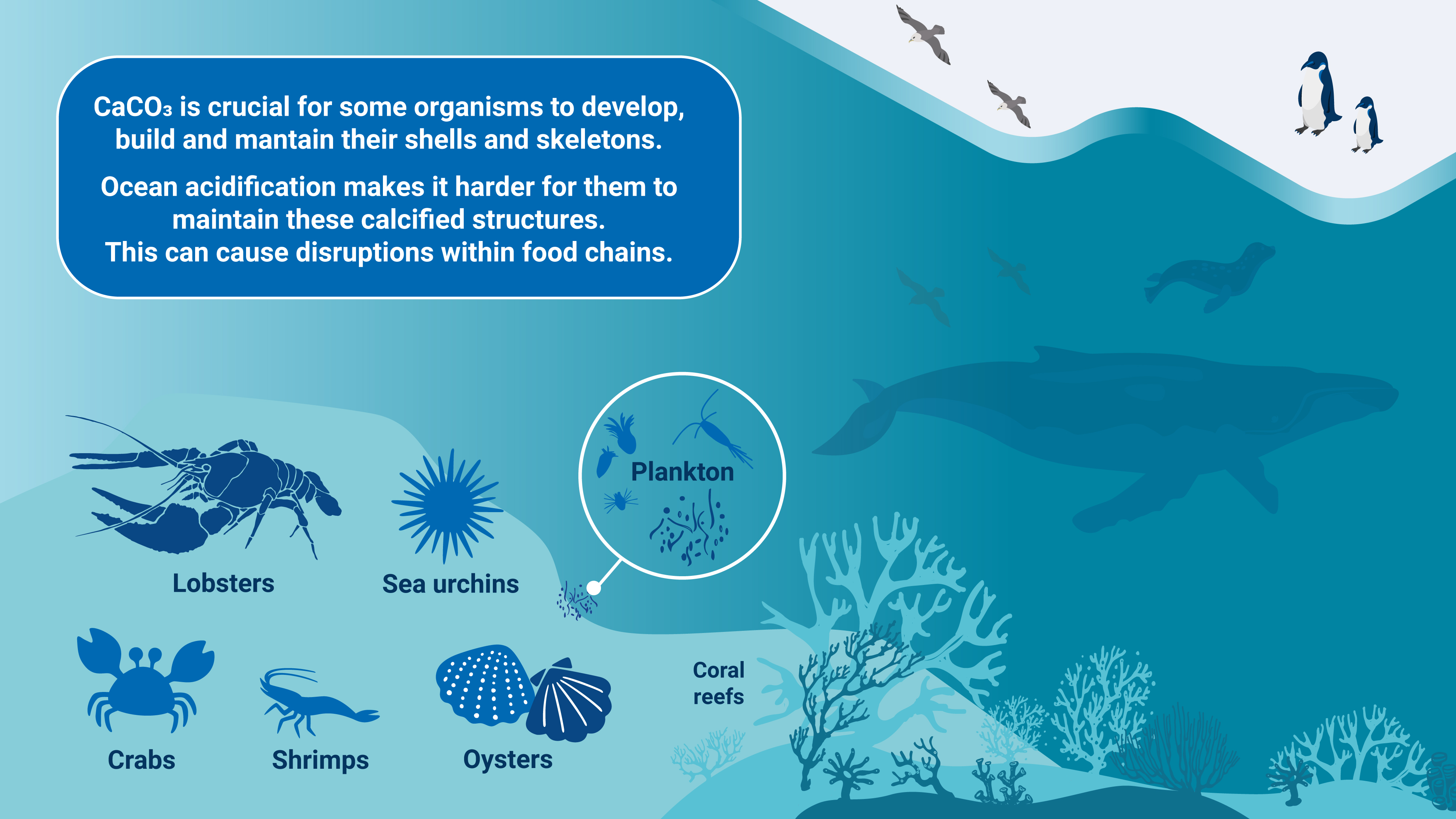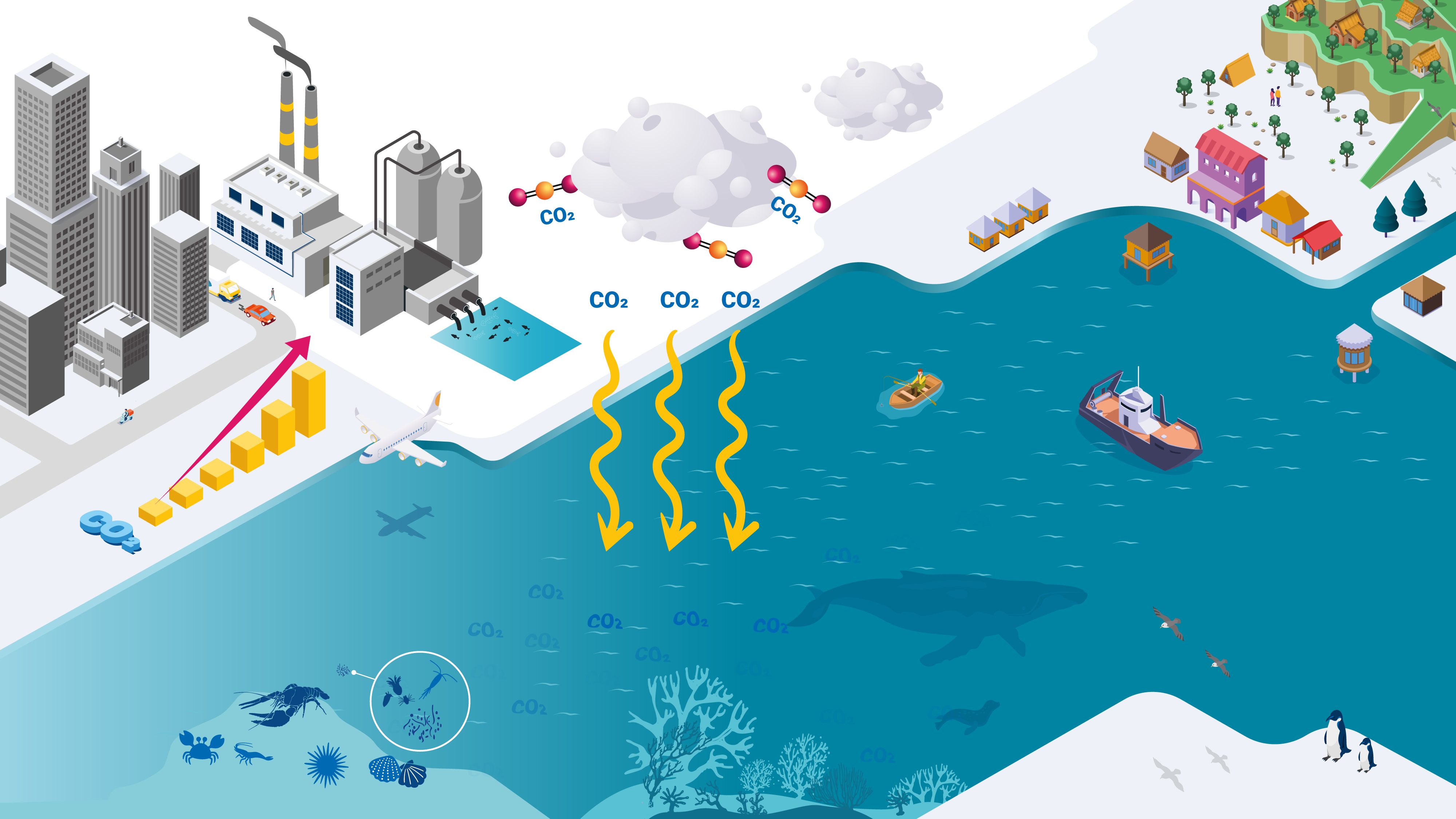
If you would like to learn more about the IAEA’s work, sign up for our weekly updates containing our most important news, multimedia and more.
How Carbon Emissions Acidify Our Ocean
Vladimir Tarakanov
Ocean acidification is a consequence of increasing carbon dioxide (CO2) emissions, a greenhouse gas driving climate change. The ocean absorbs around one third of all human induced CO2, causing a change in seawater chemistry called ocean acidification. It presents a serious threat to marine life, ecosystem health and people whose livelihoods depend on the ocean.
When CO2 dissolves in seawater, it forms carbonic acid (H2CO3), releasing hydrogen ions (H+) and increasing ocean acidity. Acidity plays a key role in many biological mechanisms, including calcification.
Calcium carbonate (CaCO3) is crucial for organisms which need calcium to develop, build and maintain their shells and skeletons, such as certain types of plankton, oysters, crabs, sea urchins, shrimps and lobsters.
Ocean acidification makes it harder for them to maintain these calcified structures. This can cause disruptions within food chains.
Ocean acidification can also impact the ability of coral reefs to recover from warming and other stressors, by making it harder for corals to build their calcium-based skeletons.
Ocean acidification impacts both small coastal communities and big industries. By harming aquaculture and tourism, communities that rely on the ocean as a source of food and income will be particularly affected.
It is estimated that up to three billion people dependent on marine and coastal biodiversity for their livelihoods could be impacted by ocean acidification. Large shellfish industries are also threatened.
A study in the United States of America found that the country’s shellfish industry could lose more than US $400 million annually due to ocean acidification by 2100. Researchers and industries are exploring solutions to minimize the effect of ocean acidification in oyster hatcheries.
While it is important to develop adaptation solutions, it is also crucial to address the root of the problem — unabated CO2 emissions from the burning of fossil fuels.
Coordinated action on ocean acidification
To develop and implement solutions, it is critical to better understand the biological effects of ocean acidification. Nuclear and isotopic techniques, such as radiotracers, can be used as key tools to better understand these processes.
To facilitate this research, as well as to encourage collaboration, coordination and communication regarding international activities on ocean acidification, the IAEA has established the Ocean Acidification International Coordination Centre (OA-ICC).
The Centre brings together researchers and organizations from all over the world to focus on scientific capacity building, and outreach and communication activities, in order to promote a science-based approach to decision making in addressing this global problem.
The OA-ICC:
- Organizes training courses around the world; provides access to data; and manages a dedicated, open-access website that offers a steady stream of scientific reports, media coverage, policy briefs and other materials on ocean acidification.
- Promotes the development of data portals, standardized methodologies and best practices.
- Raises awareness among relevant stakeholders and informs them about the role nuclear and isotopic techniques can play in assessing ocean acidification’s impacts.
- Supports the Global Ocean Acidification Observing Network (GOA-ON) — a community providing information on ocean acidification monitoring facilities and access to real-time data.











